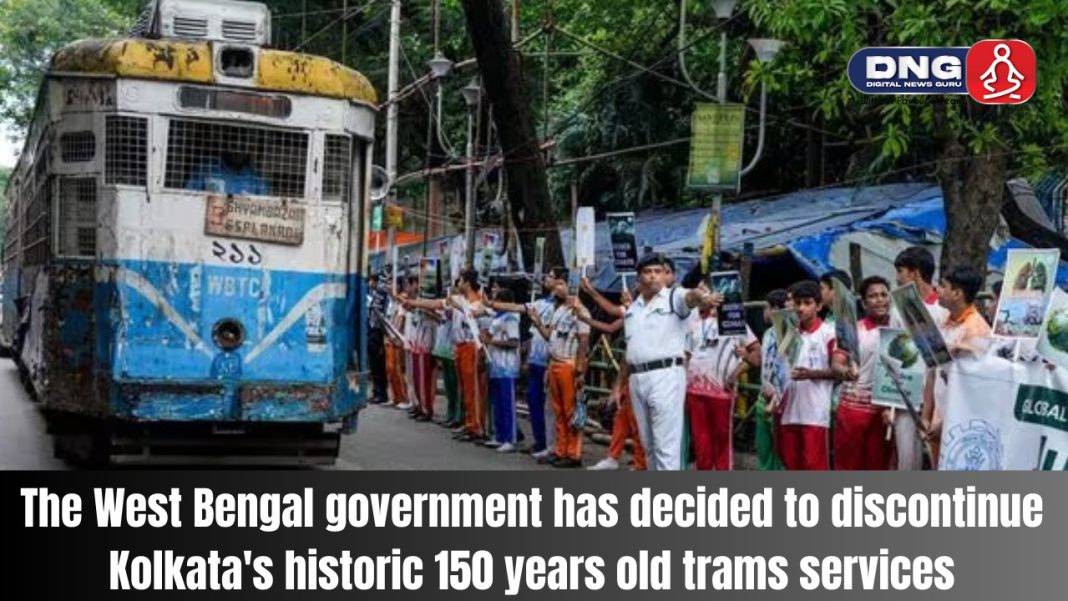DIGITAL NEWS GURU KOLKATA DESK:
The West Bengal government has decided to discontinue Kolkata’s historic 150 years old trams services
After 150 years of operation, Kolkata’s iconic tram system is set to be discontinued, marking the end of one of the city’s most cherished cultural symbols.
The decision to shut down the trams, once the pride of India’s transportation history, has evoked a mix of nostalgia, sadness, and acceptance among residents. Introduced during British rule in 1873, Kolkata’s trams have been a constant in a rapidly changing urban landscape. However, with the evolving needs of a modern city and significant infrastructural challenges, the West Bengal government has decided to end this historic service.
The Historical Significance of Kolkata’s Trams
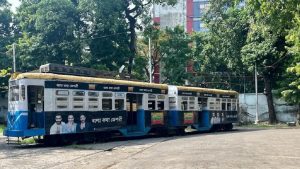
Kolkata’s trams are more than just a mode of transport; they represent a living link to the city’s colonial past. In 1873, the first horse-drawn trams began operating in what was then called Calcutta, carrying passengers along a modest 3.8 km stretch. By 1902, the system was electrified, making Kolkata the first city in Asia to run electric trams. Over the decades, the tram system expanded and became an essential part of daily life for the city’s residents.
At its height, Kolkata’s tram network spanned over 70 km, offering a leisurely yet reliable service to commuters and tourists alike. The trams, with their clanging bells and open windows, became synonymous with Kolkata’s unique character. They provided more than just transportation—they offered a view into the soul of the city, as they passed through its historic streets, grand colonial buildings, and bustling marketplaces.
The trams became a cultural symbol, appearing in films, books, and paintings that celebrated Kolkata’s rich history. They were emblematic of the city’s resilience and charm, a vestige of a time when life moved at a slower, more reflective pace. For generations of Kolkatans, the trams were an everyday reminder of the city’s past, weaving through the fabric of modern life.
The Challenges Leading to Their Discontinuation
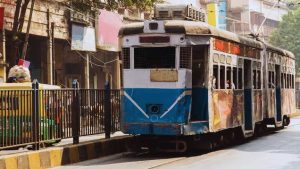
Despite their historical importance, the relevance of trams began to diminish in the latter half of the 20th century. Kolkata’s population exploded, and with it came an increased demand for faster, more efficient modes of transportation. Buses, taxis, and later, the metro system, began to eclipse the trams in terms of speed and capacity. The trams, which once symbolized progress, began to seem outdated and slow.
A lack of investment in the tram infrastructure only worsened the situation. Over the years, tramcars fell into disrepair, and the tracks became dilapidated. Many of the routes were encroached upon by other vehicles or were simply closed down. The remaining tramcars often experienced technical issues, making them less reliable. Ridership plummeted as commuters opted for faster alternatives like buses, auto-rickshaws, and the metro.
The city’s growing traffic congestion also became a significant obstacle. The slow-moving trams were increasingly seen as an impediment to the city’s flow, especially during rush hours. Traffic authorities had to reroute vehicles to accommodate the trams, leading to further delays. Modern urban planning began to prioritize quicker, more efficient transit systems, like the metro, over maintaining the old tramways.
Efforts were made to revive the tram system in recent years. Some tramcars were modernized, and there were even proposals to turn certain routes into tourist attractions. However, these efforts failed to gain traction. The trams were simply no longer able to meet the needs of a city that had outgrown them.
The Decision to End Tram Services
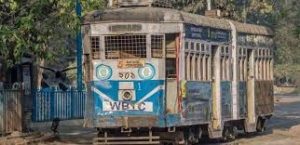
In 2024, the West Bengal government made the official decision to discontinue the tram service, citing the high cost of maintaining the aging infrastructure and the low ridership numbers. While the government acknowledged the tram’s historical and cultural significance, the practicalities of modern urban planning took precedence. Kolkata’s transportation system has been evolving rapidly, with a focus on expanding metro services and improving road infrastructure to meet the demands of its growing population.
The government argued that keeping the trams operational was no longer financially viable. Maintaining the outdated system required significant resources, and with fewer people using the trams, it made little sense to continue funding them. Moreover, the trams’ slow speed was increasingly viewed as a hindrance to traffic flow in a city where congestion is a pressing issue.
Mixed Reactions from the Public
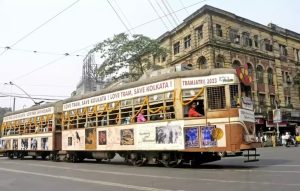
The decision to end the trams has prompted mixed reactions. For many older residents of Kolkata, the trams were more than just a form of transportation—they were a beloved part of the city’s identity. The clattering of tramcars along the tracks was a familiar sound, and the sight of trams trundling through the streets was a comforting reminder of Kolkata’s past. Many have expressed sadness and nostalgia at the loss of such an iconic piece of their city’s history.
Heritage activists and conservationists have called for efforts to preserve at least some of the trams as a part of Kolkata’s living history. Suggestions have been made to turn certain routes into heritage lines or convert old tramcars into museums or cafes. Such proposals have been successful in other cities around the world, where trams have been repurposed as tourist attractions, preserving their legacy while adapting to modern urban needs.
Others, however, recognize the necessity of the decision. Kolkata is a city in flux, and its transportation system must evolve to keep up with the demands of a modern metropolis. The expansion of the metro system, in particular, has been a major success, offering fast and efficient service across the city. Many see the end of the trams as a natural progression toward a more streamlined, modern transport network.
Conclusion: A Farewell to an Era

The end of Kolkata’s trams marks the conclusion of a significant chapter in the city’s history. While the trams may be gone from the streets, their legacy will endure in the memories of those who experienced them and in the stories, films, and images that immortalize them. As Kolkata moves forward, balancing modernization with the preservation of its rich heritage will continue to be a challenge. The trams may no longer be a part of daily life, but their impact on the city’s identity will not be forgotten.
YOU MAY ALSO READ: Severe Weather Alert in Uttar Pradesh: Rising Water Levels and Heavy Rainfall in Prayagraj, Varanasi, Gorakhpur, Agra and Mathura



